Рейтинг книг Jeremy Roe
Начиная изучать творчество писателя - уделите внимание произведениям, которые находятся на вершине этого рейтинга. Смело нажимайте на стрелочки - вверх и вниз, если считаете, что какое-то произведение должно находиться выше или ниже в списке. В результате общих усилий, в том числе, на основании ваших оценок мы и получим самый адекватный рейтинг книг Jeremy Roe.
-
1.
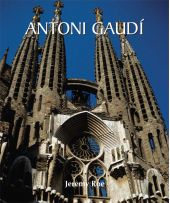 Spanish architect and designer, Antoni Gaudí (1852-1926) was an important and influential figure in the history of contemporary Spanish art. His use of colour, application of a range of materials and the introduction of organic forms into his constructions were an innovation in the realm of architecture. In his journal, Gaudí freely expressed his own feelings on art, “the colours used in architecture have to be intense, logical and fertile.” His completed works (the Casa Batlló, 1905-1907 and the Casa Milà, 1905-1910) and his incomplete works (the restoration of the Poblet Monastery and the altarpiece of Alella in Barcelona) illustrate the importance of this philosophy. His furniture designs were conceived with the same philosophy, as shown, for example, in his own office (1878) or the lamps in the Plaza Real in Barcelona. The Sagrada Familia (1882-1926) was a monumental project which eventually took over his life (it was still incomplete at the time of his death). ... Далее
Spanish architect and designer, Antoni Gaudí (1852-1926) was an important and influential figure in the history of contemporary Spanish art. His use of colour, application of a range of materials and the introduction of organic forms into his constructions were an innovation in the realm of architecture. In his journal, Gaudí freely expressed his own feelings on art, “the colours used in architecture have to be intense, logical and fertile.” His completed works (the Casa Batlló, 1905-1907 and the Casa Milà, 1905-1910) and his incomplete works (the restoration of the Poblet Monastery and the altarpiece of Alella in Barcelona) illustrate the importance of this philosophy. His furniture designs were conceived with the same philosophy, as shown, for example, in his own office (1878) or the lamps in the Plaza Real in Barcelona. The Sagrada Familia (1882-1926) was a monumental project which eventually took over his life (it was still incomplete at the time of his death). ... Далее -
2.
 Architecte et designer barcelonais, Antoni Gaudí (1852-1926) occupe une large place dans l’histoire de l’art espagnol. L’usage de la couleur, l’emploi de différents matériaux et l’introduction du mouvement dans ses constructions furent une innovation dans le domaine de l’architecture. Il laissa dans ses carnets de nombreuses réflexions à propos de son art telles que : « La couleur dans l’architecture doit être intense, logique et fertile. » Appuyée par de nombreuses photographies et de nombreux détails architecturaux, l’étude que mène l’auteur, Jeremy Roe, permet une approche du contexte de l’art barcelonais et introduit une minutieuse étude critique des constructions, objets et écrits du plus célèbre architecte barcelonais. ... Далее
Architecte et designer barcelonais, Antoni Gaudí (1852-1926) occupe une large place dans l’histoire de l’art espagnol. L’usage de la couleur, l’emploi de différents matériaux et l’introduction du mouvement dans ses constructions furent une innovation dans le domaine de l’architecture. Il laissa dans ses carnets de nombreuses réflexions à propos de son art telles que : « La couleur dans l’architecture doit être intense, logique et fertile. » Appuyée par de nombreuses photographies et de nombreux détails architecturaux, l’étude que mène l’auteur, Jeremy Roe, permet une approche du contexte de l’art barcelonais et introduit une minutieuse étude critique des constructions, objets et écrits du plus célèbre architecte barcelonais. ... Далее -
3.
 Architecte et designer barcelonais, Antoni Gaudí (1852-1926) occupe une large place dans l’histoire de l’art espagnol. L’usage de la couleur, l’emploi de différents matériaux et l’introduction du mouvement dans ses constructions furent une innovation dans le domaine de l’architecture. Il laissa dans ses carnets de nombreuses réflexions à propos de son art telles que : « La couleur dans l’architecture doit être intense, logique et fertile. » Appuyée par de nombreuses photographies et de nombreux détails architecturaux, l’étude que mène l’auteur, Jeremy Roe, permet une approche du contexte de l’art barcelonais et introduit une minutieuse étude critique des constructions, objets et écrits du plus célèbre architecte barcelonais. ... Далее
Architecte et designer barcelonais, Antoni Gaudí (1852-1926) occupe une large place dans l’histoire de l’art espagnol. L’usage de la couleur, l’emploi de différents matériaux et l’introduction du mouvement dans ses constructions furent une innovation dans le domaine de l’architecture. Il laissa dans ses carnets de nombreuses réflexions à propos de son art telles que : « La couleur dans l’architecture doit être intense, logique et fertile. » Appuyée par de nombreuses photographies et de nombreux détails architecturaux, l’étude que mène l’auteur, Jeremy Roe, permet une approche du contexte de l’art barcelonais et introduit une minutieuse étude critique des constructions, objets et écrits du plus célèbre architecte barcelonais. ... Далее -
4.
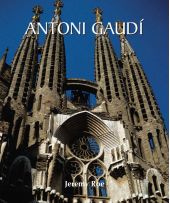 Architecte et designer barcelonais, Antoni Gaudí (1852-1926) occupe une large place dans l’histoire de l’art espagnol. L’usage de la couleur, l’emploi de différents matériaux et l’introduction du mouvement dans ses constructions furent une innovation dans le domaine de l’architecture. Il laissa dans ses carnets de nombreuses réflexions à propos de son art telles que : « La couleur dans l’architecture doit être intense, logique et fertile. » Appuyée par de nombreuses photographies et de nombreux détails architecturaux, l’étude que mène l’auteur, Jeremy Roe, permet une approche du contexte de l’art barcelonais et introduit une minutieuse étude critique des constructions, objets et écrits du plus célèbre architecte barcelonais. ... Далее
Architecte et designer barcelonais, Antoni Gaudí (1852-1926) occupe une large place dans l’histoire de l’art espagnol. L’usage de la couleur, l’emploi de différents matériaux et l’introduction du mouvement dans ses constructions furent une innovation dans le domaine de l’architecture. Il laissa dans ses carnets de nombreuses réflexions à propos de son art telles que : « La couleur dans l’architecture doit être intense, logique et fertile. » Appuyée par de nombreuses photographies et de nombreux détails architecturaux, l’étude que mène l’auteur, Jeremy Roe, permet une approche du contexte de l’art barcelonais et introduit une minutieuse étude critique des constructions, objets et écrits du plus célèbre architecte barcelonais. ... Далее -
5.
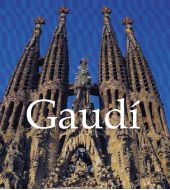 Antoni Gaudí (1852-1926), Architekt und Künstler aus Barcelona, nimmt einen bedeutenden Platz in der Geschichte der spanischen Gegenwartskunst ein. Sein Umgang mit Farbe, die Verwendung verschiedener Materialien und die Einführung von Bewegung in seine Konstruktionen sind Innovationen auf dem Gebiet der Architektur. Antoni Gaudí hat in seinen Notizbüchern viele seiner Überlegungen zu seiner Kunst festgehalten: “Die Farbe in der Architektur muss intensiv, logisch und fruchtbar sein.” Indem er sich auf zahlreiche Photographien und detailgenaue architektonische Abbildungen stützt, ermöglicht der Autor Jeremy Roe eine Annäherung an den Kontext der barcelonesischen Kunst und präsentiert eine sorgfältig verfasste Kritik der Bauten, der Designobjekte und der Schriften des bekanntesten barcelonesischen Architekten, Antoni Gaudí. Dieses Ebook ist auch als Einführung für den Besuch von Gaudís Werk in Barcelona gedacht. ... Далее
Antoni Gaudí (1852-1926), Architekt und Künstler aus Barcelona, nimmt einen bedeutenden Platz in der Geschichte der spanischen Gegenwartskunst ein. Sein Umgang mit Farbe, die Verwendung verschiedener Materialien und die Einführung von Bewegung in seine Konstruktionen sind Innovationen auf dem Gebiet der Architektur. Antoni Gaudí hat in seinen Notizbüchern viele seiner Überlegungen zu seiner Kunst festgehalten: “Die Farbe in der Architektur muss intensiv, logisch und fruchtbar sein.” Indem er sich auf zahlreiche Photographien und detailgenaue architektonische Abbildungen stützt, ermöglicht der Autor Jeremy Roe eine Annäherung an den Kontext der barcelonesischen Kunst und präsentiert eine sorgfältig verfasste Kritik der Bauten, der Designobjekte und der Schriften des bekanntesten barcelonesischen Architekten, Antoni Gaudí. Dieses Ebook ist auch als Einführung für den Besuch von Gaudís Werk in Barcelona gedacht. ... Далее -
6.
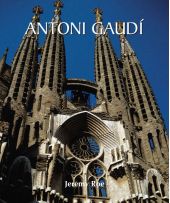 Antoni Gaudí (1852-1926), Architekt und Künstler aus Barcelona, nimmt einen bedeutenden Platz in der Geschichte der spanischen Gegenwartskunst ein. Sein Umgang mit Farbe, die Verwendung verschiedener Materialien und die Einführung von Bewegung in seine Konstruktionen sind Innovationen auf dem Gebiet der Architektur. Antoni Gaudí hat in seinen Notizbüchern viele seiner Überlegungen zu seiner Kunst festgehalten: “Die Farbe in der Architektur muss intensiv, logisch und fruchtbar sein.” Indem er sich auf zahlreiche Photographien und detailgenaue architektonische Abbildungen stützt, ermöglicht der Autor Jeremy Roe eine Annäherung an den Kontext der barcelonesischen Kunst und präsentiert eine sorgfältig verfasste Kritik der Bauten, der Designobjekte und der Schriften des bekanntesten barcelonesischen Architekten, Antoni Gaudí. Dieses Ebook ist auch als Einführung für den Besuch von Gaudís Werk in Barcelona gedacht. ... Далее
Antoni Gaudí (1852-1926), Architekt und Künstler aus Barcelona, nimmt einen bedeutenden Platz in der Geschichte der spanischen Gegenwartskunst ein. Sein Umgang mit Farbe, die Verwendung verschiedener Materialien und die Einführung von Bewegung in seine Konstruktionen sind Innovationen auf dem Gebiet der Architektur. Antoni Gaudí hat in seinen Notizbüchern viele seiner Überlegungen zu seiner Kunst festgehalten: “Die Farbe in der Architektur muss intensiv, logisch und fruchtbar sein.” Indem er sich auf zahlreiche Photographien und detailgenaue architektonische Abbildungen stützt, ermöglicht der Autor Jeremy Roe eine Annäherung an den Kontext der barcelonesischen Kunst und präsentiert eine sorgfältig verfasste Kritik der Bauten, der Designobjekte und der Schriften des bekanntesten barcelonesischen Architekten, Antoni Gaudí. Dieses Ebook ist auch als Einführung für den Besuch von Gaudís Werk in Barcelona gedacht. ... Далее -
7.
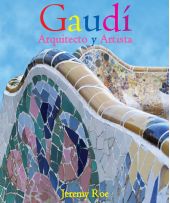 El arquitecto y diseñador español Antoni Gaudí (1852-1926) es una importante e influyente figura en la historia del arte contemporáneo de España. El uso del color, la utilización de diferentes materiales y la introducción de movimiento en sus construcciones fueron toda una innovación en el terreno de la arquitectura. En su diario, Gaudí expresó sus propios sentimientos sobre el arte: “los colores usados en arquitectura tienen que ser intensos, lógicos y fértiles”. El autor, Jeremy Roe, utiliza una amplia gama de detalles fotográficos y arquitectónicos que le permiten revelar el contexto del arte de Barcelona mientras nos introduce en el mundo de Gaudí, maestro de algunas de las más famosas construcciones, objetos de diseño y grandes obras de la arquitectura española. Este libro ayuda a comprender a Gaudí y su legado. ... Далее
El arquitecto y diseñador español Antoni Gaudí (1852-1926) es una importante e influyente figura en la historia del arte contemporáneo de España. El uso del color, la utilización de diferentes materiales y la introducción de movimiento en sus construcciones fueron toda una innovación en el terreno de la arquitectura. En su diario, Gaudí expresó sus propios sentimientos sobre el arte: “los colores usados en arquitectura tienen que ser intensos, lógicos y fértiles”. El autor, Jeremy Roe, utiliza una amplia gama de detalles fotográficos y arquitectónicos que le permiten revelar el contexto del arte de Barcelona mientras nos introduce en el mundo de Gaudí, maestro de algunas de las más famosas construcciones, objetos de diseño y grandes obras de la arquitectura española. Este libro ayuda a comprender a Gaudí y su legado. ... Далее -
8.
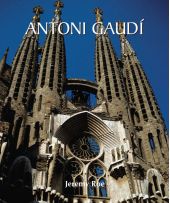 Spanish architect and designer, Antoni Gaudí (1852-1926) was an important and influential figure in the history of contemporary Spanish art. His use of colour, application of a range of materials and the introduction of organic forms into his constructions were an innovation in the realm of architecture. In his journal, Gaudí freely expressed his own feelings on art, “the colours used in architecture have to be intense, logical and fertile.” His completed works (the Casa Batlló, 1905-1907 and the Casa Milà, 1905-1910) and his incomplete works (the restoration of the Poblet Monastery and the altarpiece of Alella in Barcelona) illustrate the importance of this philosophy. His furniture designs were conceived with the same philosophy, as shown, for example, in his own office (1878) or the lamps in the Plaza Real in Barcelona. The Sagrada Familia (1882-1926) was a monumental project which eventually took over his life (it was still incomplete at the time of his death). ... Далее
Spanish architect and designer, Antoni Gaudí (1852-1926) was an important and influential figure in the history of contemporary Spanish art. His use of colour, application of a range of materials and the introduction of organic forms into his constructions were an innovation in the realm of architecture. In his journal, Gaudí freely expressed his own feelings on art, “the colours used in architecture have to be intense, logical and fertile.” His completed works (the Casa Batlló, 1905-1907 and the Casa Milà, 1905-1910) and his incomplete works (the restoration of the Poblet Monastery and the altarpiece of Alella in Barcelona) illustrate the importance of this philosophy. His furniture designs were conceived with the same philosophy, as shown, for example, in his own office (1878) or the lamps in the Plaza Real in Barcelona. The Sagrada Familia (1882-1926) was a monumental project which eventually took over his life (it was still incomplete at the time of his death). ... Далее
Комментарии:


